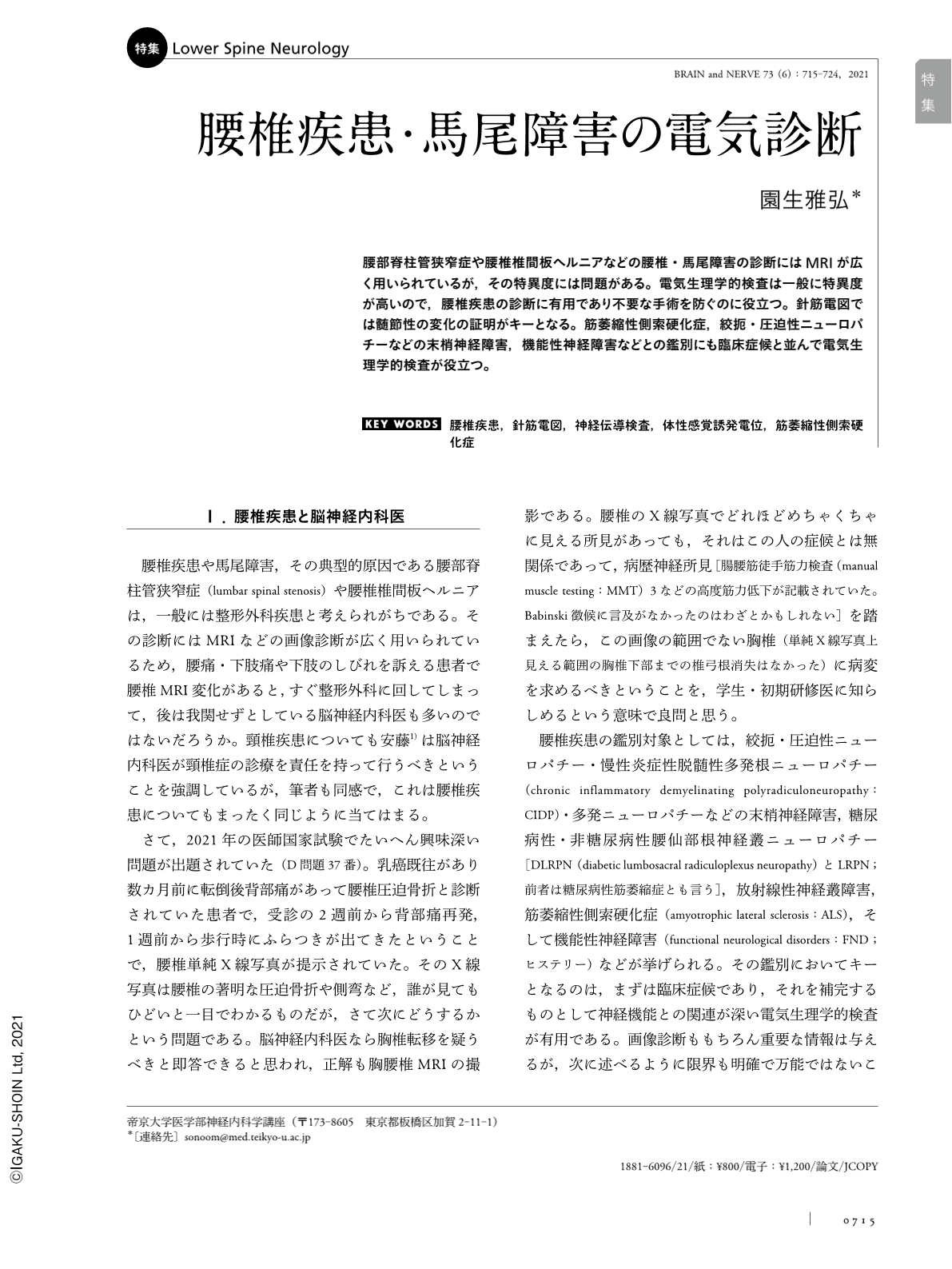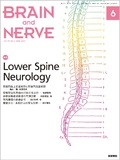Japanese
English
- 有料閲覧
- Abstract 文献概要
- 1ページ目 Look Inside
- 参考文献 Reference
腰部脊柱管狭窄症や腰椎椎間板ヘルニアなどの腰椎・馬尾障害の診断にはMRIが広く用いられているが,その特異度には問題がある。電気生理学的検査は一般に特異度が高いので,腰椎疾患の診断に有用であり不要な手術を防ぐのに役立つ。針筋電図では髄節性の変化の証明がキーとなる。筋萎縮性側索硬化症,絞扼・圧迫性ニューロパチーなどの末梢神経障害,機能性神経障害などとの鑑別にも臨床症候と並んで電気生理学的検査が役立つ。
Abstract
Magnetic resonance imaging (MRI) is widely employed in the diagnosis of lumbar spine disorders, such as lumbar spinal stenosis or lumbar disc herniation. However, incomplete specificity is a definite drawback, given that MRI abnormalities are frequently identified in aged control subjects. Relying solely on MRI without considering clinical symptoms/signs or electrodiagnosis may lead to misdiagnosis. In contrast, electrodiagnostic tests are generally considered to have higher specificity than MRI, making them more useful for preventing unnecessary surgeries. Needle EMG can clarify the distribution of the involvement through fibrillation potentials and positive sharp waves, and can complement manual muscle testing. Denervation at the tensor fascia latae muscle can confirm an L5 lesion. Regarding nerve conduction studies (NCS), sensory nerve action potentials are usually normal in lumbar disorders. Somatosensory evoked potentials are useful for localizing the lesion. Amyotrophic lateral sclerosis (ALS) is an important differential diagnosis because spine surgery will promote the disease progression of ALS. Documenting upper extremity and thoracic paraspinal involvements are key to diagnose ALS, in combination with profuse fasciculation potentials in EMG. NCS plays a key role in diagnosing entrapment and demyelinating neuropathies. Electrodiagnostic tests are also useful for confirming functional neurological disorders.

Copyright © 2021, Igaku-Shoin Ltd. All rights reserved.


